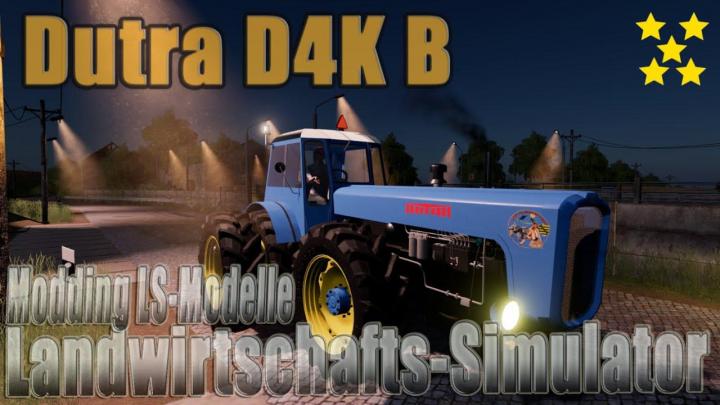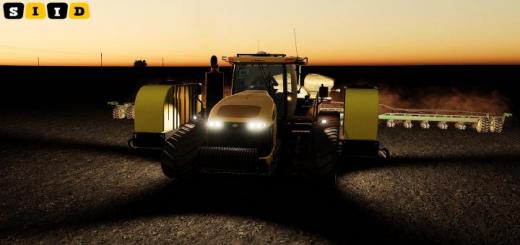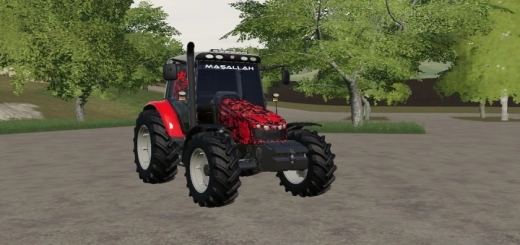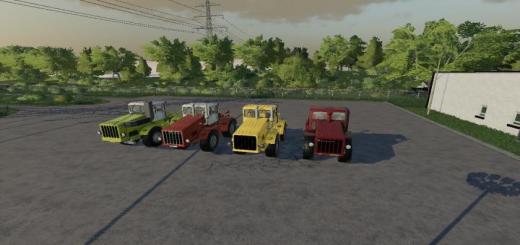FS19 – Dutra D4K B V1

The D4K-B was powered by the six-cylinder Csepel 613.15 diesel engine (7983 cc capacity,
90 HP at 1850 U / min.) Driven. This engine was also used in some Ikarus bus models.
Motors from other manufacturers such as Perkins or Scania were also used for export to non-socialist countries.
Including the creeper gears, the tractor with three-speed gearbox and countershaft reached speeds of 1.0 to 25.3 km / h. As the same transmission was always used, export variants with higher-revving engines reached up to about 30 km / h.
Steyr (WD610) motors were used in some cases. The tractor was then called the Steyr-Dutra 110 or the Steyr-Dutra 1300. The WD610 motor is the further development of the 613 Csepel motor, which in turn was a license replica of a Steyr motor.
However, the WD (WD: Wasser Diesel) 610 is a direct injection engine, unlike the Csepel 613, which is a prechamber diesel. Its output is 105 DIN hp with a displacement of just 5.995l, it runs at a speed of up to 2300 rpm which accelerates the tractor to around 30 km / h.
Since the Steyr motor delivers its highest torque at around 2200 rpm, but the Csepel motor at around 1800 rpm, a reduction has been built into the transmission on the Steyr-Dutra tractors, which reduces the transmission so that the Steyr motor delivers its optimal torque PTO speed reached.
The tractor ran at 2300 rpm in the reduction ratio of only 25 km / h, and reached 30 km / h with direct drive. This also resulted in a doubling of gears: 6 forward gears in the arable group, 6 forward gears in the road group and a total of 4 reverse gears.
The D4K-B were particularly suitable for heavy tillage. A total of around 15,000 D4K B were manufactured from 1964 to 1975, the largest export customer was the GDR, which purchased around 4,000 D4K B. The list price at that time was 39,500 marks from the German central bank, in Great Britain the cheapest version cost 3,445 pounds.
The D4K used in the GDR were replaced by the ZT 300 and the K-700. Agricultural production cooperatives only received reference certificates for the K-700 if they could prove the scrapping of a D4K. Therefore and in the course of the extraction of secondary raw materials, practically the entire GDR inventory of D4K was scrapped. [2]
The Dutra 1000 (successor to the D4KB) built in Hungary had a safety cabin and could be climbed through a right or left side door. Its brake system is an air pressure-controlled hydraulic brake, unlike the D4KB, which has a pure air pressure brake that controls each wheel via an air pressure cylinder with brake linkage. The engine is also a Csepel 613, and no changes have been made to the transmission. The safety cabin was developed to protect the tractor operators from accidents, since the old cabin was basically just a weather roof and it offered no protection when the tractor overturned. In the event of an overturn, the cabin was simply crushed, which meant a high risk of serious or fatal injuries. The new safety cabin has an integrated catch frame that keeps the cabin stable even in the event of an overturn, so that the driver has a better chance of survival.
Neuaufbau LS-Modelle
File :22.9 MB / ZIP
Download FS19 – Dutra D4K B V1 - www.modsup.com





Latest Comments